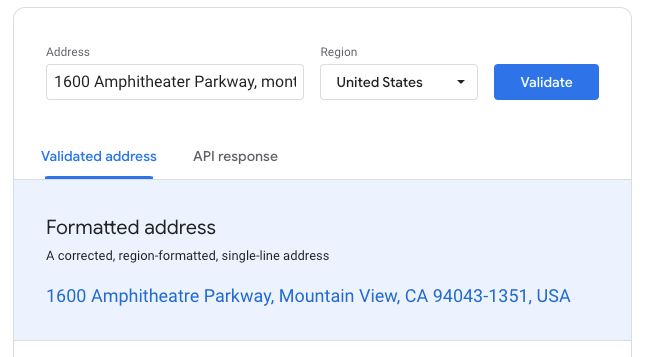简介
Address Validation API 是一项接受地址的服务。它会识别地址组成部分并验证这些组成部分。该服务还会对地址进行标准化处理以方便邮寄,并找到地址的最优纬度/经度坐标。(可选)对于美国和波多黎各的地址,您可以启用编码准确性支持系统 (CASS™)。为何要使用 Address Validation API
借助地址验证 API,您可以提高送达可预测性并减少送达失败的情况,从而提升客户体验。为此,您可以捕获无效地址,并更好地了解地址特征。
如果您不需要验证各个地址组成部分,地理编码 API 可能更符合您的需求。Geocoding API 可将地址转换为纬度和经度坐标。Address Validation API 会验证地址的正确性。如需详细比较,请参阅架构中心的使用 Google Maps Platform 构建位置验证功能。
您可以使用 Address Validation API 执行哪些操作
借助 Address Validation API,您可以确定地址是否指向真实地点。如果地址不是指真实地点,API 可以识别可能错误的组成部分,您可以向客户展示这些部分以进行更正。以下是使用该 API 的示例工作流程:
客户输入地址 - 下图显示了一个基本表单,客户可以在其中输入地址,这可能是结账流程的一部分。
应用将地址发送到 API - 应用将此地址作为输入传递给 Address Validation API。
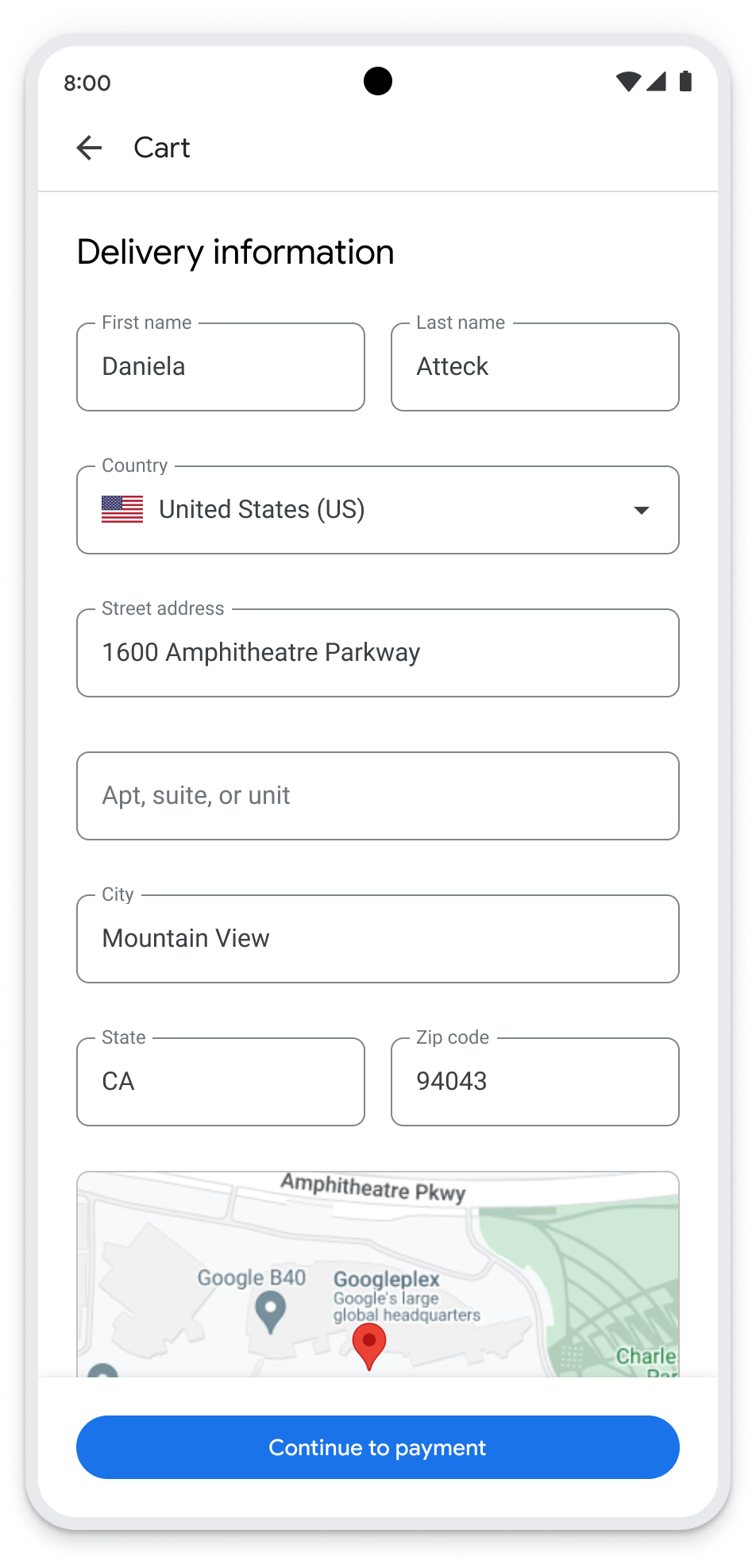
API 验证并标准化地址 - Address Validation API 会在其响应中返回由 API 确定的完整地址,或指明缺少哪些信息。
客户确认或更正地址 - 根据 API 返回的内容,您可以向客户提供以下提示:A.确认建议的地址。B. 提供缺失的信息。 C. 修正地址。
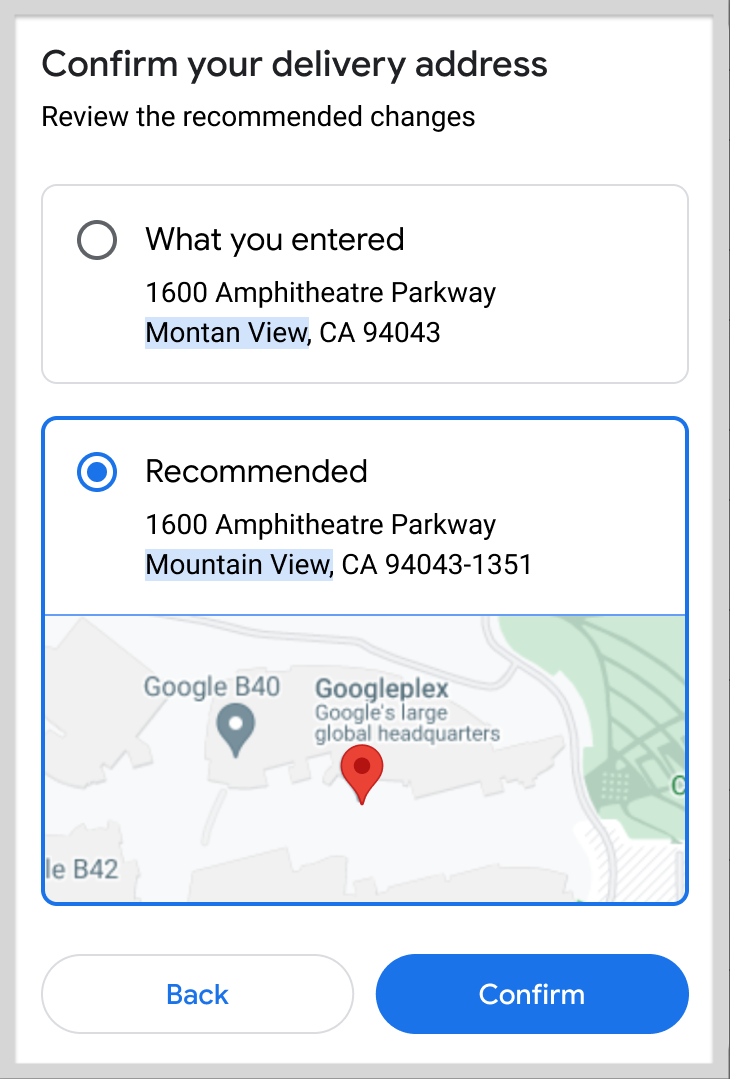
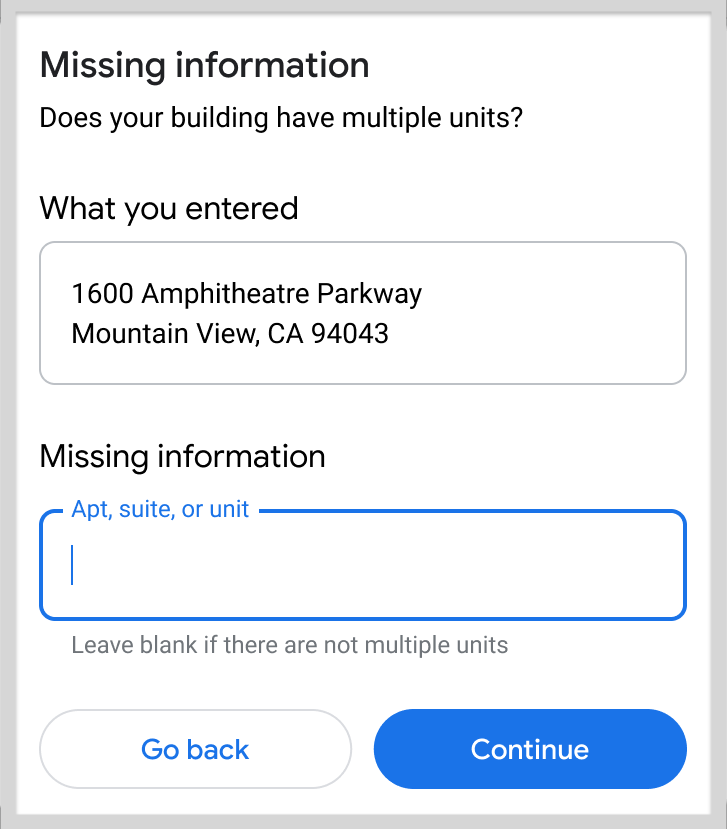
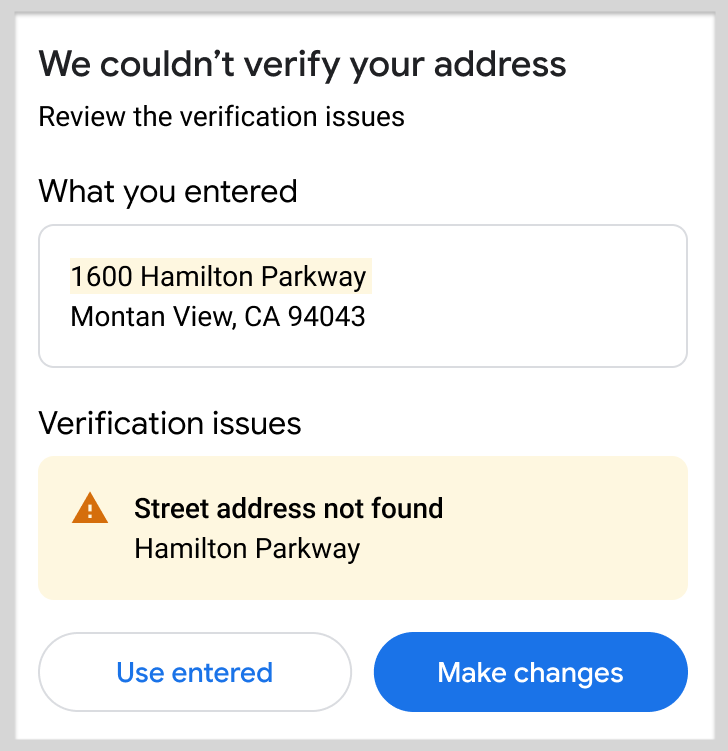
Address Validation API 的运作方式
地址验证功能接受 POST 请求,该请求的地址采用 JSON 正文的形式。它会将地址拆分为各个组成部分,然后尝试执行以下操作:
- 更正 - 提供组件级验证检查,包括子场所(如有)。
- 完成 - 尝试推断缺失或不正确的地址组成部分。
- 格式 - 清理并标准化地址组成部分的格式。
资源
下表汇总了通过 Address Validation API 提供的资源及其返回的数据。如需了解具体详情,请参阅 Address Validation API 参考文档。
| 数据资源 | 返回的数据 |
|---|---|
|
JSON 格式的地址组成部分。 请参阅验证地址。 |
完整且经过验证的地址(如果可能)。 每个地址组成部分的验证状态。 如果地址可使用以下服务,则:
请参阅了解验证响应。 |
如何使用 Address Validation API
| 1 | 试用演示版 | 探索演示,其中包含各种正确和不正确的地址格式。 此演示提供了一种有用的方式来探索服务返回的值以及 JSON 格式的 API 响应。 |
| 2 | 检查覆盖率 | 查看覆盖范围详细信息,了解 Address Validation API 支持哪些国家/地区。 |
| 3 | 开始设置 | 首先设置您的 Google Cloud 项目,然后完成后续说明。 |
| 4 | 申请地址验证 | 首先使用基本地址,然后为了提高准确性,您可以启用 CASS(仅适用于美国和波多黎各的地址)。请参阅请求地址验证。 |
| 5 | 处理回答 | Address Validation API 响应提供两个属性,您需要以不同的方式使用这两个属性。 请参阅了解基本回答。 |
| 6 | 提高验证准确性 | 您可以针对 Address Validation API 响应提供反馈,帮助我们提高地址准确性。请参阅处理更新后的地址。 |
可用的客户端库
如需查看 Address Validation API 的可用客户端库列表,请参阅客户端库。
CASS™ 简介
美国邮政服务公司 (USPS®)1 维护编码准确性支持系统 (CASS™),以支持地址验证提供商并为其提供认证。经过 CASS Certified™ 认证的服务(例如地址验证 API)已确认能够填写地址中缺失的信息、对地址进行标准化处理并更新地址,从而为您提供最新且最准确的地址。
CASS 默认处于未启用状态,仅支持“美国”和“波多黎各”地区。如需启用 CASS,请在验证请求中将 enableUspsCass 设置为 true。如需了解详情,请参阅验证地址。
在您使用 USPS 服务的过程中,USPS 会评估人工创建的地址的相关请求。如果 USPS 认定某个输入地址是人为创建的,Google 必须停止为相应客户验证地址,并且必须向 USPS 报告该客户的联系信息(姓名和地址)、相关输入地址以及汇总的使用情况数据。使用该 API 即表示您同意遵守这些服务专用条款。
后续步骤
- 试用演示版:前往演示
- 查看覆盖范围:前往国家/地区覆盖范围详情
- 尝试发送第一个验证请求:前往发送地址验证请求
- 批量处理地址:请参阅使用 Address Validation API 批量处理地址
-
Google Maps Platform 是美国邮政服务公司® 的非独占被许可方。以下商标归美国邮政服务公司® 所有,并经许可使用:United States Postal Service®、CASS™、CASS Certified™。↩


